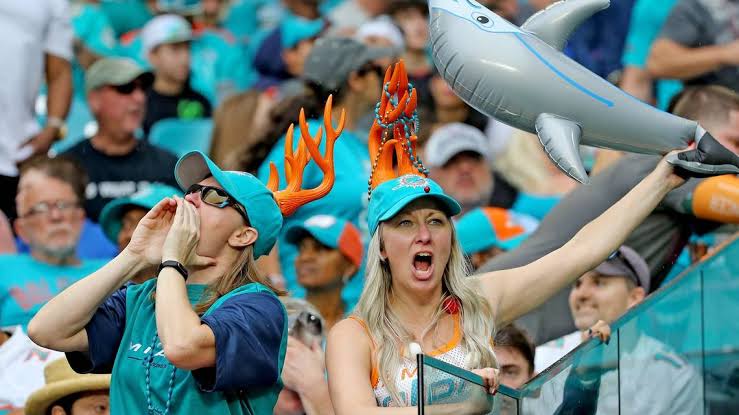BREAKING NEWS: Miami Dolphins plan to have up to 13,000 fans in attendance for their home-opener in one month and some are questioning how safe the plan is

The plan to welcome up to 13,000 fans to Hard Rock Stadium for the Miami Dolphins’ home opener—scheduled roughly a month from now—has sparked both optimism and concern. With the stadium’s full capacity exceeding 65,000, this limited attendance represents about 20% of available seats . The team and local officials say they’ve implemented comprehensive safety measures, but public health experts and some officials have criticized the move as potentially risky.
—
🏟️ What the Dolphins and Officials Propose
Masks required for all fans and staff when not eating or drinking. Mask compliance will be enforced by stadium personnel and law enforcement .
Socially distanced seating clusters, maintaining roughly 6 ft between groups .
854-0No tailgating, staggered gate entry times, multiple entry/exits to reduce crowding .
Additional precautions include upgraded hospital-grade HVAC filters, touchless restrooms and faucets, a cashless experience, and contactless security screening—with one metal detector per 104 fans .
Hard Rock Stadium earned GBAC STAR™ accreditation, reflecting compliance with advanced cleaning and disinfection practices .
Dolphins’ Vice Chairman Tom Garfinkel emphasized that health and safety were the “first priority” in designing this plan . Governor Ron DeSantis expressed hope that this scaled-down return of fans would offer “a bit of hope” to sports enthusiasts .
—
❗ Criticisms and Concerns
Inconsistent policies across the NFL: Buffalo Bills coach Sean McDermott said it was “ridiculous” for different teams to have varying crowd policies. He lamented the lack of uniformity—notably, his team won’t permit fans at their games .
Public health risks in South Florida: U.S. Rep. Donna Shalala—former HHS Secretary—warned that “community spread” remains significant in the region. She described the plan as “risky” and said making the reopening of venues safe would require “extraordinary” precautions .
Uneven state-level pandemic response: Critics argue that allowing packed events in some parts of Florida, while banning them elsewhere (like New York), could undermine efforts to control COVID-19. Differences in state regulations may also lead to mixed messages about pandemic seriousness .
—
🧩 Is It Safe Enough?
While the Dolphins appear to be implementing industry-leading health protocols, several risk factors remain:
1. Community Transmission Rates: A large crowd—even at 20% capacity—can enable asymptomatic or mildly symptomatic transmission. Masks and distancing help, but enforceability and compliance are never foolproof.
2. Polarized Enforcement: Despite rules, sports events are dynamic. Enforcing distancing and masking consistently across tens of thousands of people is a massive logistical challenge.
3. Regional Variation: South Florida remains a COVID-19 hotspot. Transmission dynamics there may be different—and potentially riskier—than areas with lower case counts.
—
🏁 Bottom Line
The Dolphins have built a robust safety framework: limited capacity, mask enforcement, distancing, cleaning protocols, and touchless technologies. Yet public health experts caution that these measures may not fully eliminate risk—especially while community spread continues.
For fans planning to attend, the key questions are:
Are you comfortable with lingering risks?
Can you commit fully to wearing a mask, avoiding group interactions, and using touchless systems?
In the absence of zero-risk conditions, it becomes a matter of personal risk tolerance. The Dolphins’ plan is notably cautious within the context of professional sports, but the broader backdrop of COVID-19 spread in Florida makes it far from risk-free.
Would you like a deeper dive into how other teams are managing fan attendance, or perhaps a comparison of stadium reopening models across the NFL?
